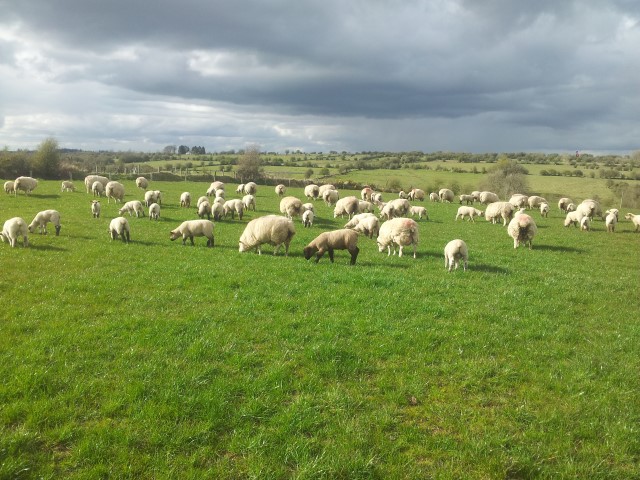With lambing in full swing on farms right across the country. Teagasc in their latest sheep newsletter took the opportunity to underline the importance of grass on sheep farms post lambing.
It noted grass is the cheapest and most reliable feed for ewes post-lambing. The growth of lambs largely depends on the ewes’ milk during the first five to six weeks of life. Teagasc state that a sward height of six cm is capable of giving lamb growth rate of 300g per day. This assumes that grass is good quality leafy material, it notes.
Teagasc stress if there is insufficient grass (less than 5cm) during early lactation, milk yield will be low and you will have to feed meals. This is particularly important if ewes are not in good body condition.
Teagasc advise if grass is limited, as a guide, feed 0.75-1.0kg/head/day during the first three weeks to ewes in good condition that are rearing twins. If ewes are in poor condition, increase the daily allowance by about 0.25kg. In the case of ewes rearing singles Teagasc says, 0.25-0.5kg should be adequate in the majority of situations. If no grass is available, the requirements will be significantly higher.
According to Teagasc the key to having an adequate grass supply early in spring, is an adequate rest period for fields/paddocks over winter (120 days) and the application of fertiliser, especially nitrogen (N).
Teagasc note the wet conditions in February have resulted in little or no fertiliser being applied on many farms. It says where none has been applied, every effort should be made to apply N at the first available opportunity, when weather and ground conditions allow you to travel on land.
Teagasc advise that fertiliser should be purchased in advance and be available in the yard for when it is needed. Apply at the rate of 29kg N per hectare (23 units per acre) for lowly stocked farms, (six to seven ewes/Ha), gradually increasing for higher stocking rates to double this when stocking rate is greater than 10 ewes per hectare.
